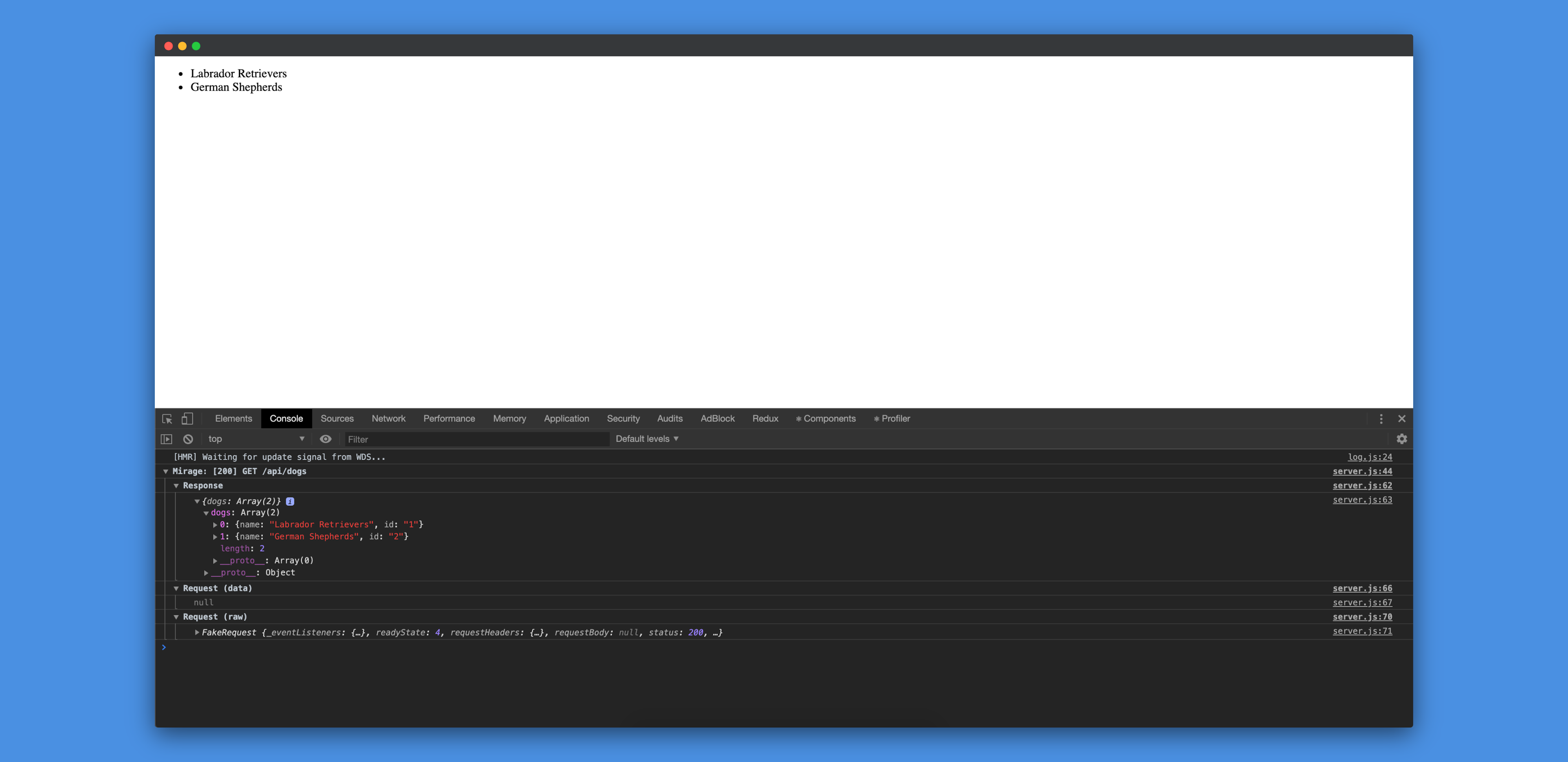In this article, we'll learn about how to build a front-end application without back-end APIs using Mirage.
Introduction
As a front-end developer, I've faced multiple issues while integrating front-end applications with back-end APIs. Most of the time, the issue that I've faced was that the back-end isn't ready yet and as a result, I had to either wait for it to be completed or work with static mock data. The problem with working with static mock data is that we won't be able to create, update or delete any data as it isn't persistent data. We can only read data from a sample .json file and import it to test our front-end application. As a result, we'll never be sure if our application is working as expected until and unless the whole back-end is ready.
Recently, I came across Mirage which is an API mocking library that lets us build, test and share a complete working JavaScript application without having to rely on any backend services. Unlike other mocking libraries, Mirage makes it easy to recreate dynamic scenarios, the kind that are typically only possible when using a real production server.
Let's learn more about how this tool works in details.
Getting started with Mirage
Let's create a new application from scratch:
mkdir mirage-mock-api && cd mirage-mock-api
Now, let's install Mirage in our application:
yarn add --dev miragejs
Next, we'll create a route to get a list of dog breeds. Let's create a new file called server.js inside src directory:
const Mirage = require("miragejs");
function makeServer({ environment = "development" } = {}) {
let server = new Mirage.Server({
environment,
models: {
dog: Mirage.Model,
},
seeds(server) {
server.create("dog", { name: "Labrador Retrievers" });
server.create("dog", { name: "German Shepherds" });
},
routes() {
this.namespace = "api";
this.get("/dogs", (schema) => {
return schema.dogs.all();
});
},
});
return server;
}
module.exports = {
makeServer,
};
Adding Mirage to our front-end application
Let's create a React application using Create React App:
npx create-react-app mirage-react-app && cd mirage-react-app
Now, let's import the Mirage app that we just created:
import React from "react";
import ReactDOM from "react-dom";
import { makeServer } from "mirage-mock-api/src/server";
import App from "./App";
if (process.env.NODE_ENV === "development") {
makeServer();
}
ReactDOM.render(<App />, document.getElementById("root"));
Also, let's test our Mirage API:
import React, { useState, useEffect } from "react";
export default function App() {
let [dogs, setDogs] = useState([]);
useEffect(() => {
fetch("/api/dogs")
.then((res) => res.json())
.then((json) => {
setDogs(json.dogs);
});
}, []);
return (
<ul data-testid="dogs">
{dogs.map((dog) => (
<li key={dog.id} data-testid={`dog-${dog.id}`}>
{dog.name}
</li>
))}
</ul>
);
}
Now, if we visit http://localhost:3000, we'll see the Mirage API:

Features of Mirage
References
The front-end application is available here and the back-end application is available here.
Conclusion
In this article, we've learnt about Mirage and how it can help us develop front-end applications even when the back-end part isn't ready! I hope that this article helps you in your future projects.